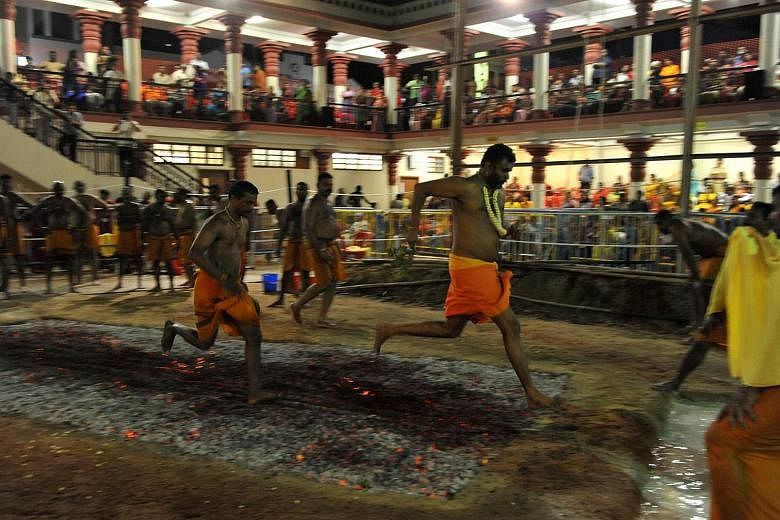Traditional Chinese puppetry, the Hindu practice of firewalking and food - such as kaya toast and nasi padang - will soon be documented as part of Singapore's heritage.
The National Heritage Board (NHB) will today call a tender for companies to research on such intangible cultural heritage.
The research will be done through a survey that will involve fieldwork and collating available material, and is slated to start in September. About 150 types of intangible cultural heritage are expected to be identified.
Some of these cultural aspects, like fengshui, did not originate here but have been practised widely in Singapore for decades.
The methodology of the research and implementation of the findings will be guided by members of a panel comprising architecture, geography, sociology, anthropology and history experts, the NHB said at a media briefing last week.
Intangible heritage can be classified broadly into five categories:
•Oral traditions and expressions such as folktales.
•Performing arts such as the Malay Dikir Barat.
•Social practices such as lo hei - the tossing of raw fish salad during Chinese New Year.
•Knowledge and practices concerning nature and the universe such as traditional Chinese medicine.
•Traditional craftsmanship, which includes food.
Mrs Rosa Daniel, NHB chief executive, said: "Findings from the survey will complement research done by NHB over the years and help plug the gaps in our heritage repository."
She said the survey will not be exhaustive and information will continue to be updated.
The findings will go towards the creation of a "national inventory", she added. The information may also be used to make documentaries or hold exhibitions.
In defining Singapore's intangible cultural heritage, the NHB took reference from the 2003 United Nations Educational, Scientific and Cultural Organisation (Unesco) Convention for the Safeguarding of the Intangible Cultural Heritage.
On why such heritage is important, Professor Brenda Yeoh, dean of the National University of Singapore's Faculty of Arts and Social Sciences and chair of the Heritage Advisory Panel, said that at the turn of the 20th century, South-east Asia was very interested to learn about others and rushed to learn the meaning of being modern.
"One century later, what we see is that a lot of issues are about identity (and) heritage," she said. "The panel sees this as important work because this will give us the kinds of social and emotional strength to face a troubled future."
The NHB also gave an update on the first comprehensive survey of Singapore's tangible heritage.
This includes the research and documentation of buildings and sites of historic or cultural interest, which were completed in or before 1980 in mainland Singapore .
Information on 20 buildings, which are among those covered in the survey launched last September, will be put up on NHB's heritage portal Roots.sg from today.
Among these buildings are Singapore Polytechnic in Dover Road, Changi Cottage in Netheravon Road and People's Park Complex in Chinatown.
Currently, the tangible heritage includes Singapore Botanic Gardens, 72 national monuments and more than 7,000 conserved buildings, heritage trails and historic sites.
President of the Singapore Heritage Society, Dr Chua Ai Lin, said it is high time Singapore's intangible cultural heritage was documented.
"Such heritage is often not properly recognised. The public may not even know about some of these intangible aspects. It's great that they are doing it," she said.

